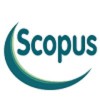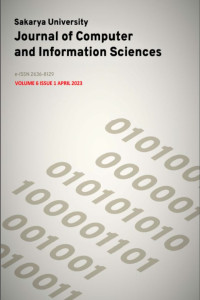Research Article
Aim & Scope
- Sakarya University Journal of Computer and Information Sciences (SAUCIS) is a single blind, peer reviewed international scientific journal which has an open access policy.
- The journal is published triannual and all papers are single blind reviewed.
- SAUCIS started publishing life in 2018 and accepted from the TR Index starting from 2019. As of 01 June 2020, the publication language of the journal is English.
- Submitted papers should not have been previously published or be currently under consideration for publication. Authors must sign a copyright transfer agreement while they submit the manuscript to the system.
- The SAUCIS is devoted to publication of original research on computer and information sciences.
- The journal publishes original research articles on computer science, computer engineering, software engineering and information systems engineering.
The scope of the journal includes all fields of computer science, computer engineering, software engineering and information systems engineering.
Some of these fields are:
- Artificial Intelligence,
- Computer Networks,
- Computing Theory,
- Cybernetics,
- Cybersecurity,
- Data Structures and Algorithms,
- Deep Learning,
- Hardware & Architecture,
- Internet of Things,
- Robotics,
- Image Processing,
- Operating Systems,
- Programming Languages,
- Virtual and Augmented Reality
- Other fields on computer sciences
Author Guidelines
Academic impartiality and scientific quality are important criteria in the evaluation of articles submitted for publication. Therefore, the recommendations of the ICMJE (International Committee of Medical Journal Editors) and the International Standards for Editors and Authors of COPE (Committee on Publication Ethics) should be taken into account in scientific articles submitted to the SAUCIS journal.
General Information
• Sakarya University Journal of Computer and Information Sciences (SAUCIS) is an international peer-reviewed journal that publishes high-quality articles on computer sciences.
• SAUCIS is a journal published thrice a year in April, August and December.
• The language of the articles is English.
• The percentage of similarity in articles should be less than 20% excluding references.
• Article applications are not accepted via e-mail.
• The referee process is not initiated for articles that do not comply with the writing rules of the journal, without footnotes, bibliography, preface or abstract. The Editor may take a decision for special cases.
• Ethics committee approval must be obtained for all studies on clinical and experimental humans and animals.
• Manuscripts to be published must be sent via the “Submit Article” page.
NOTE: If any editor sends an article to the SAUCIS, the editor's access to the editorial panel is prevented. The editor follows all processes as a writer. After the process is completed, the editorial authority is given to him again.
Templates
Template of the manuscript can be downloaded from the following link:
Copyright form of the manuscript can be downloaded from the following link:
Preparation of Manuscript
Author(s) should use these specific styles for each part (for example title, abstract, keyword etc.) of the manuscript. The detailed information about these styles can be found in the template file.
Research articles are usually 7 to 16 pages long. In special cases, shorter or longer articles may be accepted. There is not any page limit in SAUCIS.
The language of the journal is English. Any other languages are not accepted for publication.
Author(s) should provide English versions of the title, abstract and keywords.
Abstract section of the manuscript should be between 100 and 300 words.
Paragraphs should not start with indentation.
The full name(s) of the author(s) should be given. In addition the e-mail address(es), affiliation(s), and ORCID's of all author’s should be provided. The telephone number of the corresponding author should be written.
Keywords should start with a bold “Keywords” title and should not exceed six keywords. Each keyword should be separated with comma symbol.
The citations should be given in IEEE Style. Authors can get help from citation management applications/tools when preparing their papers. The title of the citations section should be “References”.
In text citations should be written in square brackets like [1], [3-5] etc.
Equations should be aligned centered. Equation number should be written inside parenthesis and placed to the right side of the equation, aligned right in the page. Equations should be cited with their full name like “As seen in Equation 1” or like “As seen in Equations 3 and 4”.
Tables should be centered in the page. Table number and caption should be written above the table. Tables should be cited with their full name like “As seen in Table 1” or like “As seen in Tables 3 and 4”.
Figures should be centered in the page. Figure number and caption should be written below the figure. They should be cited with their full name like “As seen in Figure 1” or like “As seen in Figures 3 and 4”.
The following examples are taken from the guideline “IEEE Reference Guide” by IEEE Periodicals Transactions/Journals Department 445 Hoes Lane Piscataway, NJ 08854 USA. The detailed guide is given in here
Book
Basic Format:
J. K. Author, “Title of chapter in the book,” in Title of His Published Book, xth ed. City of Publisher, (only U.S. State), Country: Abbrev. of Publisher, year, ch. x, sec. x, pp. xxx–xxx.
Examples:
B. Klaus and P. Horn, Robot Vision. Cambridge, MA, USA: MIT Press, 1986.
L. Stein, “Random patterns,” in Computers and You, J. S. Brake, Ed. New York, NY, USA: Wiley, 1994, pp. 55–70.
The Terahertz Wave eBook. ZOmega Terahertz Corp., 2014. [Online]. Available: http://dl.z-thz.com/eBook/zomega_ebook_pdf_1206_sr.pdf. Accessed: May 19, 2014.
Conference Paper (Paper Presented at a Conference)
Basic Format:
J. K. Author, “Title of paper,” presented at the Abbreviated Name of Conf., City of Conf., Abbrev. State, Country, Month and day(s), year, Paper number.
Examples:
D. Caratelli, M. C. Viganó, G. Toso, and P. Angeletti, “Analytical placement technique for sparse arrays,” presented at the 32nd ESA Antenna Workshop, Noordwijk, The Netherlands, Oct. 5–8, 2010.
J. G. Kreifeldt, “An analysis of surface-detected EMG as an amplitude-modulated noise,” presented at the 1989Int. Conf. Medicine and Biological Engineering, Chicago, IL, USA, Nov. 9–12, 1989.
G. Veruggio, “The EURON roboethics roadmap,” in Proc. Humanoids ’06: 6th IEEE-RAS Int. Conf. Humanoid Robots, 2006, pp. 612–617, doi: 10.1109/ICHR.2006.321337.
Conference Proceedings With Series Title, Volume Title, and Edition
Basic Format:
J. K. Author, “Title of paper,” in Abbreviated Name of Conf. in Volume Title, in Series Title, ed., year, pp. xxxxxx.
Example:
A. Amador-Perez and R. A. Rodriguez-Solis, “Analysis of a CPW-fed annular slot ring antenna using DOE,” in Proc. IEEE Antennas Propag. Soc. Int. Symp., in Slot Ring Antennas II, vol. 3, 2nd ed., Jul. 2006, pp. 4301–4304.
Datasets
Basic Format:
Author, “Title.” (Date, Year). Distributed by Publisher/Distributor. http://url.com (or if DOI is used, end with a period)
Example:
S. Ansolabehere, M. Palmer, and A. Lee. “Precinct-level election data. V1.” January 20, 2014. Distributed by Harvard Election Data Archive. http://hdl.handle.net/1902.1/21919 UNF:5:5C9UfGjdLy2ONVPtgr45qA==
Manuals/Software
Basic Format:
J. K. Author (or Abbrev. Name of Co., City of Co. Abbrev. State, Country). Name of Manual/Handbook, x ed. (year). Accessed: Date. [Online]. Available: http://www.url.com
Examples:
L. Breimann. Manual on Setting Up, Using, and Understanding Random Forests v4.0. (2003). Accessed: Apr. 16, 2014. [Online]. Available: http://oz.berkeley.edu/users/breiman/Using_random_forests_v4.0.pdf
Periodicals
Basic Format:
J. K. Author, “Name of paper,” Abbrev. Title of Periodical, vol. x, no. x, pp. xxx-xxx, Abbrev. Month, year.
J. K. Author, “Name of paper,” Abbrev. Title of Periodical, vol. x, no. x, pp. xxx-xxx, Abbrev. Month, year, doi: xxx.
Examples:
M. M. Chiampi and L. L. Zilberti, “Induction of electric field in human bodies moving near MRI: An efficient BEM computational procedure,” IEEE Trans. Biomed. Eng., vol. 58, pp. 2787–2793, Oct. 2011, doi: 10.1109/TBME.2011.2158315.
J. Zhang and N. Tansu, “Optical gain and laser characteristics of InGaN quantum wells on ternary InGaN substrates,” IEEE Photon. J., vol. 5, no. 2, Apr. 2013, Art no. 2600111.
M. M. Chiampi and L. L. Zilberti, “Induction of electric field in human bodies moving near MRI: An efficient BEM computational procedure,” IEEE Trans. Biomed. Eng., vol. 58, no. 10, pp. 2787–2793, Oct. 2011, doi: 10.1109/TBME.2011.2158315.
After eight and more authors, “et al.” should be used after the first author’s name. Otherwise, the names of all authors should be expressed.
M. Ito et al., “Application of amorphous oxide TFT to electrophoretic display,” J. Non-Cryst. Solids, vol. 354, no. 19, pp. 2777–2782, Feb. 2008.
Ethical Principles and Publication Policy
The publication policy of the Sakarya University Journal of Computer and Information Sciences (SAUCIS) is based on the improvement and dissemination of information in an impartial and respectful manner. The processes applied in line with this policy directly affect the quality of the studies submitted by authors and affiliated institutions. Peer-reviewed studies support and materialize the scientific method. Therefore, all the parties taking part in the process (authors, readers, researchers, publishers, reviewers, editors) should comply with the ethical principles.
The ethical duties and responsibilities listed below are based on the guidelines and policies published as open access by the Committee on Publication Ethics (COPE).
The publication of an article in a peer-reviewed journal is essential for the development of a coherent and respected knowledge network. Peer-reviewed articles support and develop scientific methods. Therefore, it is important for all relevant parties involved in the publishing process, including authors, journal editors, reviewers, and publishing agencies, to agree on the expected ethical behaviors and standards. Sakarya University Journal of Computer and Information Sciences expects all its parties to take on the following ethical responsibilities as part of the publication ethics.
1. Ethical Principles
1.1. Authorship of the Paper
Authorship should be limited to those who have made a significant contribution to the conception, design, execution, or interpretation of the reported study. All those who have made significant contributions should be listed as co-authors. Where there are others who have participated in certain substantive aspects of the research project, they should be acknowledged or listed as contributors. The corresponding author should ensure that all appropriate co-authors and no inappropriate co-authors are included in the paper and that all co-authors have seen and approved the final version of the paper and have agreed to its submission for publication.
1.2. Conflicts of Interest
Authors: All authors should disclose in their manuscript any financial or other substantive conflict of interest that might be construed to influence the results or interpretation of their manuscript. All sources of financial support for the project should be disclosed.
Reviewers: Referees should inform the journal editor about the evaluation process if they suspect any conflict of interest in the article they are evaluating and refuse article evaluation if necessary. To prevent conflict of interest, people in the institutions where the article authors are working cannot referee the article.
Editors: Editors should not have personal or financial conflicts of interest with articles.
1.3. Data Access and Retention
Authors are asked to provide the raw data in connection with a paper for editorial review and should be prepared to provide public access to such data, if practicable, and should in any event be prepared to retain such data for a reasonable time after publication.1.4. Data Fabrication and Falsification
Fabrication and/or falsified experimental results, including the manipulation of images.
1.5. Duplicate / Multiple Submission(s)
Manuscripts that are either found to have been submitted elsewhere or published elsewhere. If authors have used their own work, either previously submitted or published, as the basis for a submitted manuscript, they are required to cite the previous work. They also need to indicate how novel contributions are offered in their submitted manuscript, over and above those of the previous work.
1.6. Intellectual Property
• Authors certify that their submitted manuscript (and any supporting items) are their own intellectual property, and the copyright has not been transferred to others.• Authors certify that the manuscript contains no plagiarism, no fabrication, no falsification, no manipulated citations and that the manuscript conforms to JSS authorship policies.
• All manuscripts, revisions, drafts, and galleys remain the intellectual property of the author(s). Except as stated in the agreed license, the author(s) retain the copyright to their work.
• All review comments and reports remain the intellectual property of the reviewer or editor. Except as stated in the agreed license, the author(s) retain the copyright to their work.
• Authors, reviewers, and editors agree to keep all communications, comments, or reports from reviewers or editors confidential.
• Reviewers and editors agree to keep all manuscripts, revisions, and drafts confidential, except for the final published galley(s).
1.7. Correction, Retraction, Expression of Concern
• Editors may make corrections if they detect minor errors in the published article that do not affect the findings, interpretations, or results.• Editors may retract the article in case of major errors/violations that invalidate the findings and results.
• Editors may issue a statement of concern if there is a possibility of abusive research or publication by the authors, if there is evidence that the findings are unreliable and the authors' institutions have not investigated the incident, or if the potential investigation seems unfair or inconclusive. COPE and ICJME guidelines are considered regarding the correction, retraction, and expression of concern.
1.8. Publication of Studies Based on Surveys and Interviews
Aiming to establish ethical assurance in scientific periodicals, SAUCIS journal adopts the principles of the "Code of Conduct and Best Practice Guidelines for Journal Editors" and the "Code of Conduct for Journal Publishers" published by the Committee on Publication Ethics (COPE). In this scope, the following aspects should be adhered in the studies submitted to the journal:• Ethics committee approval should be obtained for research conducted in all the disciplines that require ethics committee approval, and this approval should be stated and documented in the article.
• In studies that require ethics committee approval, information about the approval (committee name, date, and issue number) may be included in the method section of the study. However, in case reports, information about the informed consent and the signed consent form should be included in the Article Information Form at the end of the article.
The studies that require ethics committee approval are as follows:
• All kinds of research conducted with qualitative or quantitative approaches that require data collection from participants through surveys, interviews, focus group works, observations, experiments and other interview techniques.
• Use of humans and animals (including material/data) for experimental or other scientific purposes,
• Clinical studies conducted on humans,
• Studies conducted on animals,
• Retrospective studies in accordance with the law on the protection of personal data,
Also;
• A statement confirming that an "informed consent form" has been received in case reports,
• Obtaining permission from the owners for the use of scales, surveys or photographs belonging to others,
• A statement confirming that copyright regulations are met for the intellectual and artistic works used.
1.9. Policy of Publishing Additional or Special Issues
A special issue can be published in our journal once a year upon the request of the Editorial Board. The publication processes of the articles sent to be included in the special issue are the same as the standard processes.1. Additional or Special issue: An issue published in addition to the regular issues of a periodically published journal. It may consist of conference papers or a series of articles focusing on a specific topic.
2. Page numbering in the additional or special issue is different from the regular issues.
3. The print run of the additional or special issue cannot be more than one third of the regular issue. The special issues containing conference paper abstracts are not included in this scope.
4. Ratios of case reports, compilations, and research articles (excluding conference paper abstracts) published in the additional or special issue will be included in the ratios of articles published in other issues.
5. The issues published as a tribute are not accepted as an additional or special issue. Their page numbering and organization are the same as the regular issues.
1.10. Plagiarism Action Plan and Measures of the Journal
The journal respects intellectual property rights and aims to protect and promote the original work of its authors. Having plagiarized content in articles do violate the research and originality standards. Therefore, all the authors submitting articles to the journal are expected to comply with the ethical standards and avoid all forms of plagiarism. If a submitted or published article is suspected of containing plagiarism, the Publication Board of the journal first examines the work. Then the work is reviewed by the Editorial Board. Afterwards, the journal contacts the author(s) and asks them to submit their justifications within 15 days. If the journal does not receive any response from the author(s) within the specified time, it would contact the affiliated university and request the investigation of the claim.The journal will take the following serious measures for published articles that are found to contain plagiarism:
• The journal will immediately contact the university to which the author(s) are affiliated, to take final action against the related author.
• The journal will remove the PDF copy of the published article from the website, will remove the published article from the issue file, and will disable all links to the published article. The phrase "Plagiarized Article" will be added to the title of the published article.
• The journal will disable the author's account and reject all future submissions by the author for the following 2 years.
Note: If readers notice an error or inaccuracy in a published article, they can file a complaint by sending an e-mail to saucis@sakarya.edu.tr.
The author should submit a similarity report for new studies submitted to the journal. Pre-reviewed articles may again be subjected to plagiarism checking in any software.
If plagiarism/self-plagiarism is detected, the authors are informed. An article with a high overall similarity rate (maximum 20%) or with more than 3% similarity rate from a single source may be rejected or sent back to the author to reduce the similarity rate.
1.11. Actions that violate scientific research and publication ethics
(Turkish Council of Higher Education [YÖK] Scientific Research and Publication Ethics Directive, Article 4)https://www.yok.gov.tr/Sayfalar/Kurumsal/mevzuat/bilimsel-arastirma-ve-etik-yonetmeligi.aspx
Plagiarism: Showing others' original ideas, methods, data or works as their own work, partially or completely, without reference to scientific rules,
Forgery: Using data that does not actually exist or has been falsified in scientific research,
Distortion: Falsifying the research records or data obtained, displaying the equipment or materials not used in the research as if used, distorting, or shaping the results of the research in the interests of the people and organizations that provide support,
Republishing: Presenting repetitive publications as separate publications in academic appointments and promotions,
Slicing: Dividing the results of a research into pieces in an improper way or in a way that disrupts the integrity of the research and publishing each one separately to increase total publication count for academic appointments and promotions,
Unfair Authorship: Including non-contributors in the author list or not including those who have contributed, changing the author's order in an unjustified and inappropriate manner, removing the names of contributors from the work in subsequent editions, using influence to include names among the authors despite not being contributors,
Other ethical violations include:
a) Not specifying the supporting individuals, institutions or organizations and their contributions in the publications made as a result of research conducted with support.
b) Using theses or studies that have not yet been submitted or have not been accepted as a source without the permission of the owner,
c) Not complying with ethical rules in research on humans and animals, not respecting patients' rights in publications,
ç) Violating the provisions of the relevant legislation in biomedical research and other clinical research related to humans,
d) Sharing the information in a work that has been assigned for review with others before it is published without the explicit consent of the author,
e) Misusing resources, spaces, facilities, and equipment provided or allocated for scientific research,
f) Deliberately making a false and ungrounded allegation about ethical violation,
g) Publishing the data obtained from surveys conducted as part of a scientific study without the explicit consent of the participants, or without the permission of the relevant institution if the study is conducted in an institution,
h) Harming animal health and ecological balance in research and experiments,
ı) Failing to obtain written permissions from authorities that are required for starting research activities or experiments,
i) Conducting research activities or experiments in violation of the related legislation or the provisions on research and experiments in the international conventions to which Turkey is a party,
j) Disregarding the obligation to inform and warn the relevant authorities about possible harmful practices related to the scientific research.
k) Not using the data and information obtained from other individuals or institutions in scientific studies to the extent and as permitted, not respecting the confidentiality of this information and not ensuring its protection,
l) Making false or misleading statements regarding scientific research and publications in academic appointments and promotions.
1.12. Journal Policies on Data Sharing and Reproducibility
SAUCIS strongly recommend author(s) submit supplementary material and data sets that illustrate the results shown in their papers. If any restrictions exist on the side of the author(s), these concerns should be shared with the Editorial Board during the submission of scientific papers.SAUCIS encourages author(s) to share data and make them publicly available if they do not violate human rights or other privacy issues. Cited data sets, apart from whether they are created by the author(s) or not, should be written in the reference lists of papers. Authors are also recommended to include a data availability statement.
SAUCIS encourages all authors to make their data available to share publicly.
1.13. Ethical Guidelines for Authors
• Studies must be original and based on research.• It must be ensured that all the persons mentioned as authors/co-authors have contributed to the article. It is against scientific ethics to show persons who have not made any academic contribution as additional authors or to rank the authors by non-scientific criteria such as title, age, and gender, regardless of the order of contribution.
• In the articles with multiple authors, it should be clearly stated to what extent the authors have contributed to which stage of the article.
• The article should not be sent to different journals at the same time and should not have been sent to another journal before. If it is found to have been sent to another journal, the publication process will be cancelled.
• It is assumed that the authors who submit articles to the journal have read and accepted the publication and writing principles of the journal, and the authors are deemed to have committed to these principles.
• The citations and bibliography should be complete.
• Plagiarism and fake data should be avoided.
• The similarity rate obtained as a result of the similarity checks should not exceed 20% in order to initiate the peer review process.
• An article may be included in a maximum of 2 PRE-REVIEW processes. The article will be rejected if the feedback conveyed to the author is not revised.
• The corresponding author must inform to the editor in case of any conflict of interest.
In this scope, WAME can be referred:
https://www.wame.org/conflict-of-interest-in-peer-reviewed-medical-journals
1.14. Ethical Guidelines for Peer Reviewers
• Peer reviewers should be aware that they play a critical role in the academic quality of the article to be published in the journal, and they should engage in the peer review process with the responsibility of improving academic quality.• Peer reviewers should only accept to review articles for which they have the expertise to make an appropriate assessment. They should also respect the confidentiality of the blind peer review process and keep the details of the article confidential at all costs.
• After the review process, any information about the reviewed article should not be shared with others under any circumstances.
• Peer reviewers should only evaluate the accuracy of the content of the articles and their compliance with academic criteria. Any difference of opinions between the article's argument and the peer reviewer should not affect the review process.
• Peer review reports should be objective and measurable. Libelous, derogatory or accusatory expressions should definitely be avoided.
• Peer reviewers should avoid superficial or inaccurate statements in their peer review reports. In reviews with negative results, a complete justification should be presented on the aspects that led to the negative result.
• Peer reviewers should review the articles within the time period allotted to them. If they are not going to review the article, they should notify the journal within a reasonable time.
1.15. Ethical Guidelines for Editors
• Editors should accept articles that will contribute to the relevant areas specified in the journal policy.• Editors should not have any conflict of interest with accepted or rejected articles.
• Editors have full responsibility and authority to accept or reject an article.
• It is editors' responsibility to keep the names of peer reviewers and authors mutually confidential.
• Only the articles that will contribute to the relevant field should be accepted.
• If an error is detected, editors should support the correction or retraction of the error.
• It is the duty of editors to complete the pre-review, peer review, editing and publishing processes of the articles submitted to the journal in a timely and appropriate manner.
• Editors should not assign people who do not contribute to the journal as editorial board members or associate editors.
2. Publication Policy
Any manuscript that is considered to be published in SAUCIS must meet the following criteria:
• Not containing ethical violations
• Having clear messages for the scientific community
• Expressing the extent of the article's contributions to researchers in the field and its relevance to social sciences
• Current fields and topics drawing the interest of researchers in the field of social sciences
• Having structural and logical integrity
• Research results that are based on scientific evidence
• Coherence of the scientific method
2.1. Review of the Articles
Articles can be submitted to the SAUCIS by registering in the "Article Management System" on http://saucis.sakarya.edu.tr/en/ web site. Articles sent by e-mail will not be taken into consideration.2.2. Pre-Review and Plagiarism Checking
The journal's compliance with the writing rules is examined and a similarity check is made to prevent plagiarism. A similarity software is used in the checking process. The overall similarity rate should be less than 20% and the similarity rate from a single source should be maximum 3%. If the similarity rate is more than 20%, the study is either rejected or sent back to the author to reduce the similarity rate. The pre-review is completed within a maximum of 30 days.2.3. Editor/Field Editor Review
After the study passes the stages of pre-review and similarity checking, it is reviewed by the relevant editor/field editor in terms of subject, scope, language use and academic competence. This review is completed within a maximum of 30 days.2.4. Peer Review Process (Double-Blind Peer Review)
Studies that pass the pre-review and editorial review undergo a confidential double-blind peer review process. Within the double-blind strategy, the identity of the peer reviewer is concealed from the author submitting publications to the journal. Similarly, the peer reviewers do not know who wrote the article they are reviewing. In other words, the peer review process is conducted by keeping both authors and peer reviewers anonymous to each other. The reports are also stored in the Article Management System.2.5. Author's Revision
Authors take into account the feedback, criticisms and recommendations of the reviewer and the Editorial Board. In case of any disagreement, they have the right to appeal with their justifications. Authors edit the article as per the reports and upload the final version of the article to the system.2.6. Field Editor Review
The field editor checks whether the author has made the requested corrections in the text. If there is a “Major Revision” requirement in the peer review reports, they send the article to the relevant peer reviewer. If there is "Acceptance" or "Minor Revision" requirement and the revisions are completed, they can submit the article for language checks (The checking process is completed within a maximum of 7 days.). If they detect that the corrections have not been made, they re-send the article to the author. They may reject the article if the author does not make the corrections again. Articles that are not accepted for publication are not deleted from the system. Their processes and files are stored in the system.2.7. English Language Checks
Studies are reviewed by the English Language Editor and if necessary, corrections are requested from the author. The checking process is completed within a maximum of 15 days.2.8. Editorial Board Review
The articles that pass technical, academic, and linguistic reviews are examined by the Editorial Board and the final publication status is determined. In case of any objection from the members, the Board decides by majority of votes.2.9. Typesetting and Layout Process
The journal undertakes the typesetting and layout processes of the studies decided to be published by the Editorial Board.2.10. Language
SAUCIS publishes articles written in English.2.11. Change of Authorship
SAUCIS accepts article authors according to the statement on the Title Page of the article. Therefore, it is the responsibility of the authors to submit the final version of the full author list. Requests for any change of authorship after the submission of the article (e.g., removal/addition of authors, change of order, etc.) are subject to editorial approval. The Editorial Board will investigate such cases and act according to the COPE flowcharts.Requests for a change of authorship should be conveyed to the Editor with an official letter stating the reasons for the change. The letter should be signed by all the authors and include their confirmation of the change of authorship. If the request is approved by the Editorial Board, the authors are required to submit a new Copyright Agreement Form according to the final author list.
2.12. Disclaimer
The opinions expressed in the articles published in the journal are those of the author(s). They do not purport to reflect the opinions or views of the SAUCIS and its Editor-In-Chief, Editors, Editorial Board or Publisher. The Editor-in-Chief, Editors, Editorial Board and Publisher assume no responsibility or liability for such cases. The sole responsibility for the published content lies with the authors.2.13. Complaints and Appeals
SAUCIS handles complaints and appeals by following the below procedure. Complaints including but not limited to the long delays in handling studies and publication ethics initially are handled by the Editor-in-Chief of SAUCIS. The Editor-in-Chief examines complaints and appeals together with Editorial Board if applicable. If anything occurs about complaints and appeals, please contact azengin@sakarya.edu.tr.2.13.1. Complaints about the Content of a Paper
The Editor-in-Chief examines the complaints of the author(s), and the reports of reviewers and make a decision about:- The confirmation of the rejection of the paper,
- The appeal of the author should be considered,
- A fresh opinion from an independent reviewer is needed.
The final decision of the Editor-in-Chief is notified to the author(s). The explanation of the consequences of the appeal is shared with the author(s) if necessary. This is the final decision of SAUCIS.
2.13.2. Complaints about Processes
The complaints about processes are handled by the Editor-in-Chief. Long delays in handling studies are examined by editors of SAUCIS and any necessary issues are shared with the Editor-in-Chief. The Editor-in-Chief evaluates the complaints, and when necessary, information is shared with the authors.2.13.3. Complaints about Ethics
The Editor-in-Chief considers complaints about publication ethics of the author’s or reviewer’s conduct. The Editor-in-Chief follows the publication ethics which are published on the SAUCIS website. The editorial board of SAUCIS examines the concern of complainants or reviewers. The details and progress of the examination are shared with the complainant(s) clearly. The Editor-in-Chief or Associate Editors provide feedback to the complainant(s) on the manner of action and the final decision.The average time during which the preliminary assessment of manuscripts is conducted: 15 days.
The average time during which the reviews of manuscripts are conducted: 60 days.
The average time in which the article is published: 90 days.
Price Policy
• SAUCIS is an open-access journal which does not request any subscription fees for article submission, reviewing and editing processes, page-layout and publication (page or color fees).
• We do not offer a reprint service for those requiring professional quality reproductions of papers.
• SAUCIS does not pay any fees to authors, reviewers, editors and editorial board members.
• All papers on SAUCIS are free to read and download.
• SAUCIS sign on to the Budapest Open Access Initiative (BOAI), which promotes free access to research literature, and has adopted the Open Access Principles that clarified in this initiative.
• All papers on SAUCIS are archived with LOCKSS (Lots of Copies Keep Stuff Safe) system through TÜBİTAK ULAKBİM DERGIPARK.
• SAUCIS does not accept announcements, advertisements, sponsorships, etc. due to its publication policy.
Indexes
Journal Boards
Editor-in-Chief
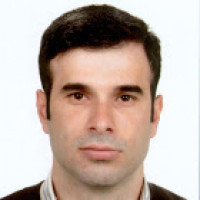
Managing Editors
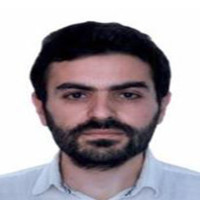
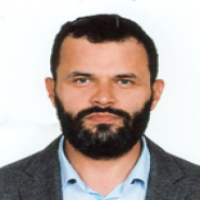


Editorial Board
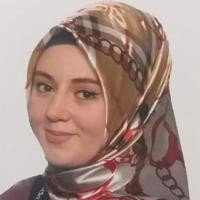


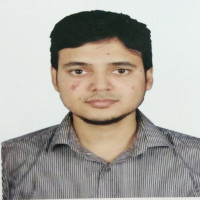

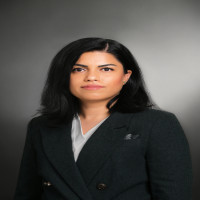
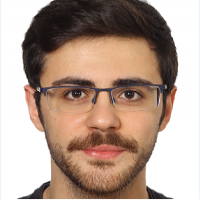
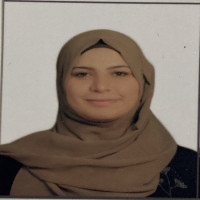



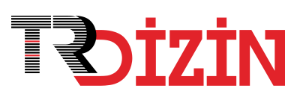
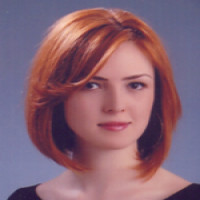

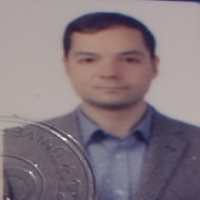
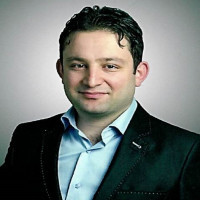

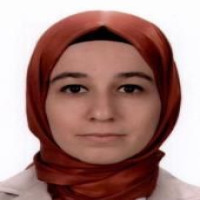

Language Editors

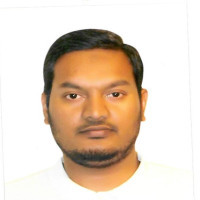





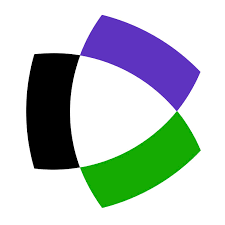
 Web
Web
Layout Editors

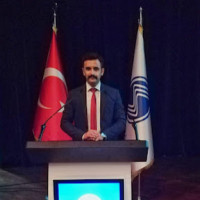
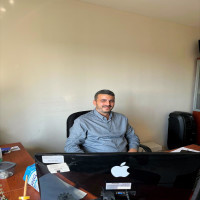
The papers in this journal are licensed under a Creative Commons Attribution-NonCommercial 4.0 International License
